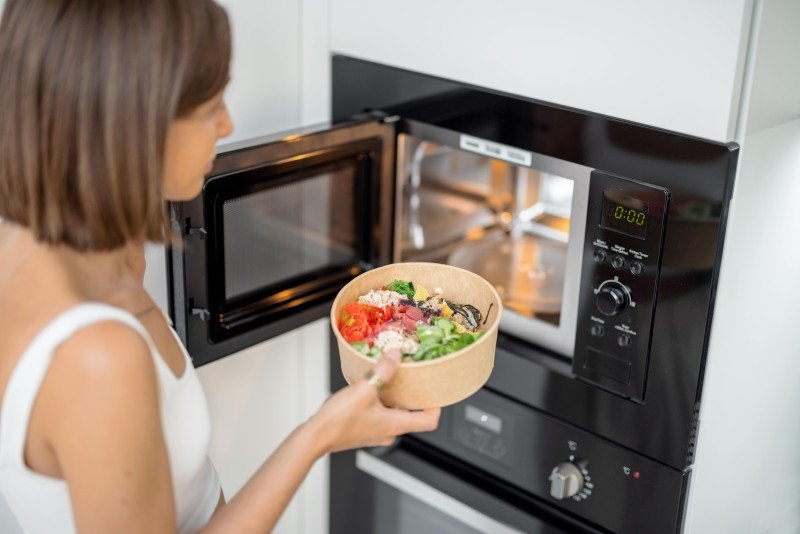The Complete Guide to Ovens and Hobs: Choosing the Right Appliances for Your Kitchen
When it concerns developing cooking work of arts, the value of quality kitchen home appliances can not be overstated. Ovens and hobs are the heart of any kitchen, making it possible for home cooks and expert chefs alike to develop, bake, and sauté scrumptious meals. Comprehending the different types of ovens and hobs, together with their features and performances, is essential for making educated buying decisions. This post uses an extensive take a look at ovens and hobs, helping you browse the choices readily available so that you can boost your kitchen's effectiveness and adaptability.
Comprehending Ovens
Ovens are necessary for cooking and baking and come in numerous types to satisfy diverse culinary requirements. Here is an overview of the most common types of ovens:
1. Traditional Ovens
Standard ovens work by heating up the air inside with gas or electric elements. They are ideal for baking cakes, roasting meats, and cooking casseroles.
2. Convection Ovens
These ovens use a fan to distribute hot air, offering an even temperature throughout, which can significantly minimize cooking times. They are ideal for baking cookies or roasting vegetables.
3. Microwave Ovens
Microwaves cook food quickly using electro-magnetic radiation. They are ideal for reheating leftovers or defrosting frozen foods but are not suitable for browning or crisping.
4. Wall Ovens
Including a wall oven into your kitchen design can conserve area and produce a streamlined aesthetic. They work simply like traditional or convection ovens however are built into the wall for easy gain access to.
5. Variety Ovens
These ovens combine stovetop burners with an oven, offering versatility for those who choose a single home appliance for all cooking requirements.
| Type | Cooking Method | Best For |
|---|---|---|
| Standard | Electric/Gas | Baking, roasting |
| Convection | Air flow | Quick cooking, even baking |
| Microwave | Electromagnetic | Reheating, defrosting |
| Wall Ovens | Electric/Gas | Space-saving, streamlined design |
| Range Ovens | Electric/Gas | Versatile cooking |
Exploring Hobs
Hobs, likewise referred to as cooktops or stovetops, supply the surface area to prepare pans directly over a heat source. Like ovens, hobs come in numerous types, which can be categorized as follows:
1. Gas Hobs
These hobs utilize a flame for cooking and supply instant heat control. They are favored by many chefs for their responsiveness and precision.
2. Electric Hobs
Electric hobs utilize coils or flat surface areas to heat pans. They use a constant heat source, however they might take longer to cool down compared to gas hobs.
3. Induction Hobs
Induction hobs use electro-magnetic energy to heat pots and pans straight, making them highly efficient and faster to cook. They are also simpler to clean as the surface area remains relatively cool.
4. Solid Plate Hobs
These are older innovation that utilizes strong metal plates to offer heat. They are durable however are less effective than modern-day choices.
| Type | Heat Source | Benefits | Drawbacks |
|---|---|---|---|
| Gas Hobs | Flame | Immediate heat control | Needs gas connection |
| Electric Hobs | Electric coils | Consistent heat | Slower to cool down |
| Induction Hobs | Electro-magnetic | Quick cooking, energy-efficient | Requires suitable cookware |
| Strong Plate Hobs | Strong metal plate | Durability | Less effective |
Selecting the Right Appliances
Selecting the best oven and hob for your kitchen involves considering various aspects:
1. Area and Layout
Step your kitchen location to determine the size and positioning of the oven and hob. Guarantee there is appropriate ventilation, especially for gas appliances.
2. Cooking Style
Think about how often you prepare and the type of meals you prepare. Sales Ovens might match avid bakers, while somebody who frequently stir-fries might choose an induction hob.
3. Energy Source
Select the energy source that best fits your lifestyle. Gas provides instant control, while electric and induction hobs offer ease of usage and are typically more energy-efficient.
4. Budget
Recognize your budget plan for kitchen home appliances. Ovens and hobs vary significantly in rate, depending on functions and brand names. Focus on vital features that meet your needs.
5. Features
Search for functionalities such as self-cleaning alternatives, wise technology compatibility, particular rack configurations for ovens, and safety features for hobs.
Often Asked Questions (FAQs)
Q1: What is the difference in between a conventional oven and a convection oven?A1: Conventional ovens heat the air inside without fans, while stove utilize a fan to distribute hot air for more even cooking. Q2: Can I utilize aluminum cookware on induction hobs?A2: No, induction hobs require ferrous (magnetic )products like cast iron or stainless-steel to work efficiently. Q3: Do gas hobs heat faster than electric hobs?A3: Yes, gas hobs supply immediate heat, making them much faster for cooking compared to electric hobs. Q4: Is it safe to use a microwave oven?A4: Yes, when used according to the maker's instructions, microwave are considered safe for cooking.
Q5: How often need to I clean my oven and hob?A5: For optimum performance, clean your oven regularly, especially after spills. Hobs need to be cleaned down after each usage
to prevent accumulation. Ovens and hobs
are vital elements of a fully equipped kitchen. Comprehending the numerous types, their performances, and the factors to consider involved in buying
them can considerably improve cooking experiences. Whether one is a casual home cook or a professional chef, investing time in picking the best home appliances can lead to cooking success and fulfillment in the kitchen. By prioritizing features that line up with your cooking design, energy sources that fit your home, and budget plan considerations, you can develop an efficient office that motivates cooking imagination.

